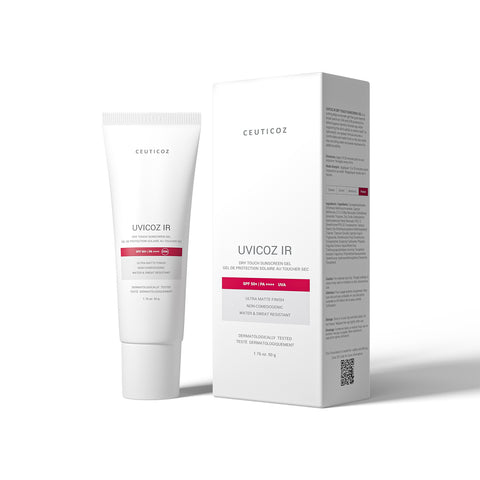
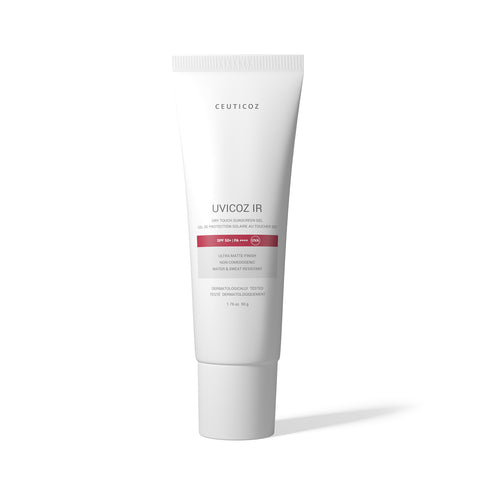

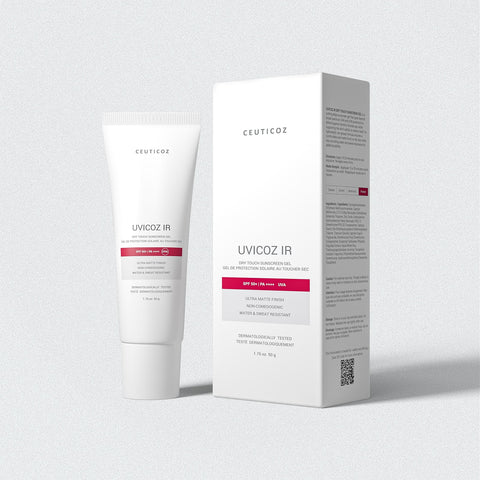

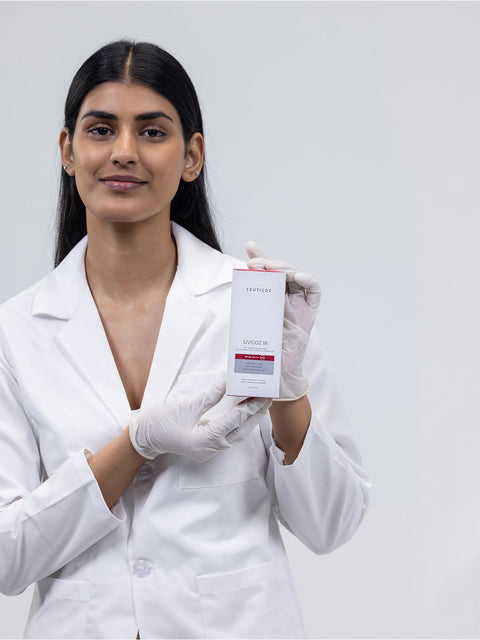
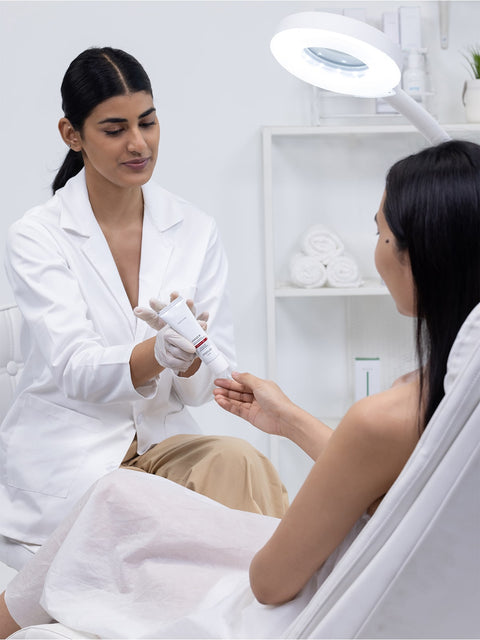
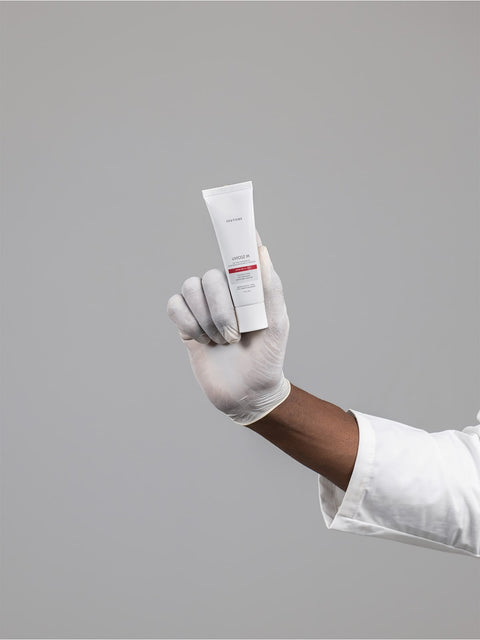
Uvicoz IR Dry Touch Sunscreen Gel
SPF 50 | PA++++ | Broad-Spectrum + Blue Light Defense
A high-efficacy, gel-based sunscreen offering advanced protection against UVA, UVB, and visible light, including blue light emitted by screens and digital devices. With a PA++++ rating and SPF 50, it provides comprehensive defense against photoaging, sunburn, and environmental stressors.
Formulated with a dry-touch, non-greasy texture, it spreads easily, absorbs quickly, and leaves no white cast—making it suitable for all skin tones, including oily and combination skin. Water- and sweat-resistant, it offers dependable protection for daily wear, even in high-activity or humid conditions.
Uvicoz IR Dry Touch Sunscreen Gel
- Broad spectrum - UVA & UVB protection
- Infrared protection
- Oxybenzone free
- Sweat-resistant sunscreen
- Non greasy & matte finish
SPF 50 | PA++++ | Broad-Spectrum + Blue Light Defense
A high-efficacy, gel-based sunscreen offering advanced protection against UVA, UVB, and visible light, including blue light emitted by screens and digital devices. With a PA++++ rating and SPF 50, it provides comprehensive defense against photoaging, sunburn, and environmental stressors.
Formulated with a dry-touch, non-greasy texture, it spreads easily, absorbs quickly, and leaves no white cast—making it suitable for all skin tones, including oily and combination skin. Water- and sweat-resistant, it offers dependable protection for daily wear, even in high-activity or humid conditions.
• Shields skin from UVA, UVB, and IR radiation
• Minimizes IR-induced inflammation and aging
• Provides antioxidant protection
• Leaves a dry-touch, breathable finish
- Uvinal A: Broad-spectrum UV protection.
- Bemotrizinol (Tinosorb S): Long-lasting UV filter.
- Physavie: Protects against thermal aging.
- Octyl Methoxy Cinnamate: Absorbs UVB radiation.
All Skin Types
- Take an adequate amount of Uvicoz IR Dry Touch Sunscreen.
- Apply on your face and neck in your AM skincare routine.
- Smooth liberally over face 15 minutes before sun exposure and as needed.
- Reapply as and when required.
Cyclopentasiloxane, Dimethicone/vinyl dimethicone crosspolymer, Caprylyl methicone, PEG-12 dimethicone/PPG-20 crosspolymer, Ethylhexyl methoxycinnamate, BHT, C12-15 alkyl benzoate, Diethylhexyl butamido triazone, Zinc oxide, Triethoxycaprylylsilane, Tapioca starch, Polymethylsilsesquioxane, Aqua/Water/Eau, Diethylamino hydroxybenzoyl hexyl benzoate, Titanium dioxide, Alumina, Simethicone, Bis-ethylhexyloxyphenol methoxyphenyl triazine, Dicaprylyl carbonate, Physalis angulata extract, Caprylic/capric triglyceride, Tocopherol, Hydroxymethoxyphenyl decanone, Tocopheryl acetate
- What are the benefits of using a dry touch sunscreen gel with IR protection?
The benefits of using such sunscreen include protection against both UV and IR radiation, a non-greasy feel, a matte finish, and reduced risk of sunburn, premature aging, and skin damage caused by the sun. - How does IR protection work in sunscreen?
IR protection in sunscreen is achieved through the inclusion of specific ingredients that act as a barrier against infrared radiation. These ingredients help to prevent the penetration of IR rays into the skin, reducing potential damage such as heat-induced skin aging and sunburn. - Is it suitable for all skin types?
Dry touch sunscreen gels with IR protection are often suitable for all skin types, including oily, combination, and sensitive skin. - How often should I apply this sunscreen?
It's generally recommended to apply sunscreen every two hours when exposed to the sun, especially during extended outdoor activities. Reapply after swimming or sweating. - What is dry touch technology in sunscreens?
Sunscreens with dry touch technology are formulated to have a lightweight and non-greasy texture and be quickly absorbed by the skin, reducing the time it takes for the product to settle and provide effective sun protection.The goal of dry touch technology is to leave the skin with a matte or velvety finish.
Info tabs
Describe, promote, explainInformation about the first step in what you're trying to describe.
Step 2Information about the first step in what you're trying to describe.
Step 3Information about the first step in what you're trying to describe.


